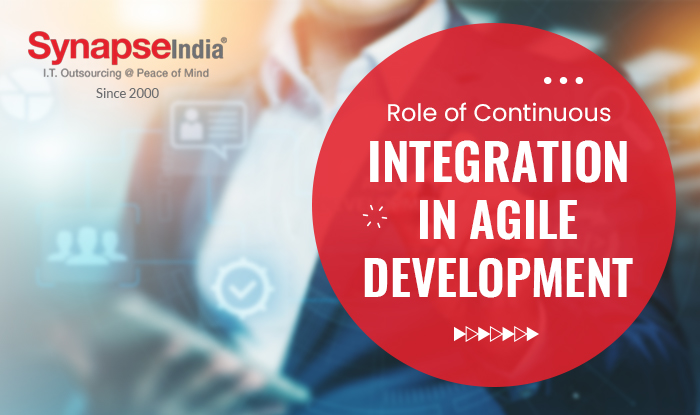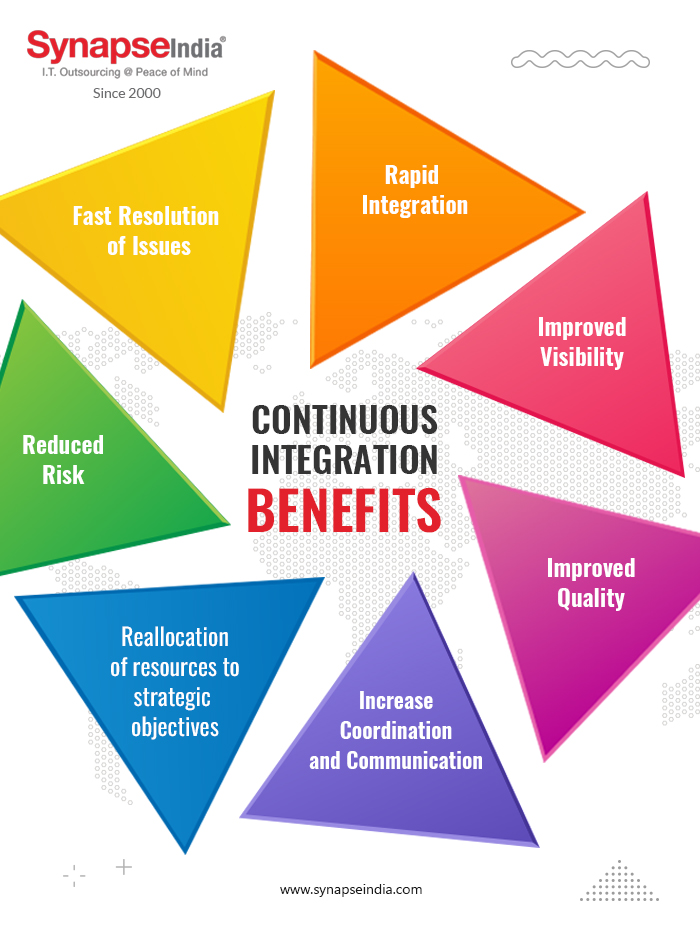 07 Sep 2022
07 Sep 2022
Nothing builds or obliterates agility like a group's obligation to continuous integration (CI). That could sound inauspicious (particularly if your group team can't seem to embrace CI), yet there's uplifting news. No matter what the innovations a team uses, odds are there's a continuous integration and mechanized test frameworks that will work for their codebase.
Continuous Integration (CI) is the rebuilding of the software development and delivery cycle to help many little changes, instead of a couple of enormous ones. It consequently moves code through the build and test environments of the SDLC, given the code passes the fundamental checks. The tests in the test environment can be computerized, or you can decide to require human approval, or both.
After each stage, feedback is sent to the developer. If any tests fizzle, the code is sent back to developers.
Since code naturally moves starting with one environment then onto the next, numerous manual tasks are disposed of from the engineers' responsibility. With less ordinary manual tasks, engineers can zero in on more enjoyable, value-adding work. Furthermore, the delivery lifecycle doesn't need to wait for human intercession, bottlenecks are wiped out and time to delivery is quicker.

Agile is a procedure based on the practices originally illustrated in the book Agile Manifesto and its 12 principles. It is an outlook, instead of a bunch of strict protocol. Agile focal points are people, with key qualities including teamwork, self-association, and responsibility.
Often agile is contrasted with the older waterfall procedure. It was created to deliver better software, and focuses on collaboration, communication, and constant change.
Moreover, an Agile mentality stresses testing, gathering criticism, and changing as an essential technique to creating and delivering the best programming. This implies little clusters of code are delivered habitually so input can be gathered, and any amendments can be quickly made.
Continuous Integration is indispensable for an Agile system. Agile and the frequent delivery of code must be accomplished if there is a CI/CD pipeline set up to computerize manual cycles for engineers and smooth out the method involved in writing and delivering code.
At the point when Agile and continuous integration are combined, the SDLC can be changed and a large number of the detriments from the old waterfall system can be wiped out. Eventually, this results in productive and rapid deployment.
Notwithstanding, levels of bureaucracy can hinder the advancement of agile and continuous integration. The code delivery process takes a rising measure of time with every additional layer of endorsement required. These delays block innovation and companies can't answer rapidly to external changes.
In particular, the imagination of the development team is impacted by these levels of bureaucracy. Subsequently, it may be hard to retain valuable employees as they move on toward associations where they can deal with more worthwhile projects instead of moving a small software change through approvals.
Continuous Integration is a stage toward Agile. Although the reception of continuous integration is a fairly huge step (a jump for some organizations), continuous delivery (CD) should be important for the progress. Without both constant coordination and ceaseless conveyance, manual tasks will continue to slow down and thwart any advantages of Agile you might expect to experience.
Sadly, numerous associations accept they have taken on a full CI/CD pipeline when they have not. All things being equal, they have carried out continuous integration and either just partial continuous delivery, or none at all.
Assuming that you notice your course of writing and delivering code isn't smoothed out, or you notice bottlenecks or delays from manual testing and approval processes, you might be one of these organizations.
Go past continuous integration to wipe out these log jams by taking on a full CI/CD pipeline.
Not exclusively will your developers, activities, and QA teams benefit, but your external clients will benefit too. This smoothed out process takes into consideration faster delivery of high-quality features.
Genuinely Agile development goes past to also incorporate continuous deployment. Continuous integration in agile implies designers' code changes are consequently merged to a common store several times a day. Continuous deployment implies applications are automatically updated after changes are passed by QA. Eventually, the objective after the adoption of full CI/CD is ceaseless deployment, that is a completely robotized release pipeline where changes are sent into production without human intercession.
Agile is essentially worried about people, rather than tools. Its emphasis is on adjusting teams and product development to the necessities of clients.
DevOps focuses on expanding coordinated effort among Dev and Ops and promoting processes including CI/CD and test automation. Continuous integration is seen as the most vital phase in the adoption of DevOps which will inevitably lead to continuous delivery.
This isn't to infer that DevOps isn't concerned about teams and clients. The cycles of DevOps bring about expanded communication between two otherwise siloed groups and smoothed out processes that lead to more joyful teams and better final results for clients.
The adoption of DevOps is advancing as an ever-increasing number of organizations are searching for a technique to stimulate their SDLC, carry more great value to clients, and further develop business results.
Beforehand, Agile was embraced with reluctance as it was addressed as a fad. Today, DevOps is being embraced pervasively, although some stay reluctant as they had been with Agile. With time, we might come to consider DevOps as we currently look at Agile: an answer for the SDLC that permits organizations to create and deliver software with less time, less costs, and less cerebral pains.
As you can see, Agile and DevOps are comparable in numerous ways. They are not competing ways of thinking, but rather, philosophies with various focuses that can be utilized all the while to complete one another and enable successful execution.
Adopting Agile development methods takes time, assets, and responsibility. But when the team has embraced the new philosophy and adjusted, both the team and the business will start to receive the benefits.
The upfront expenses and time rapidly pay off as business value flows rapidly from developer to final result. Organizations that integrate Agile with a full CI/CD pipeline can hold top employees, innovate faster than the opposition, and wow their clients.

